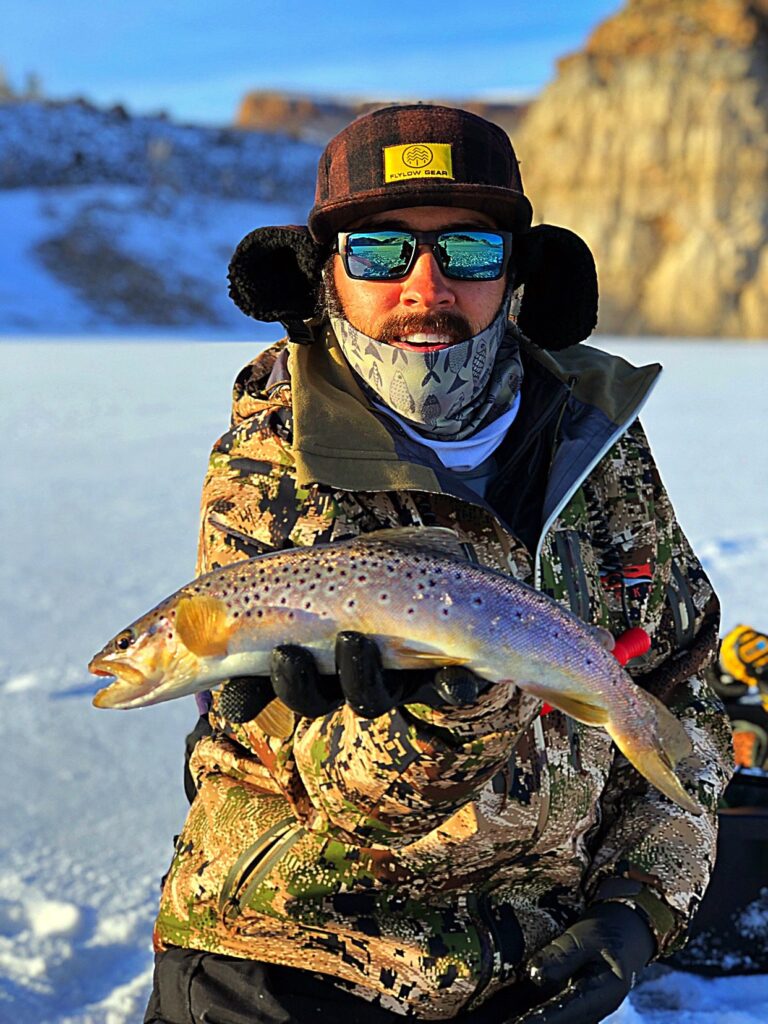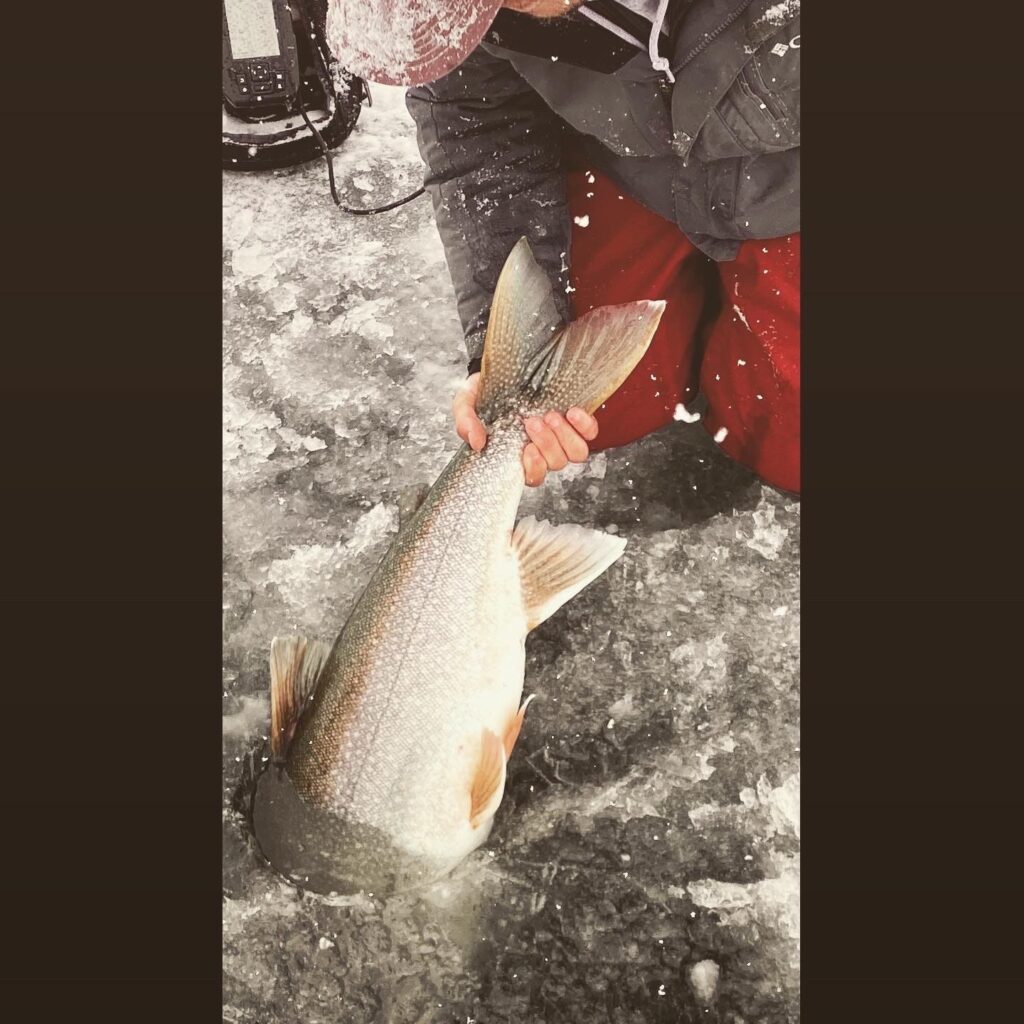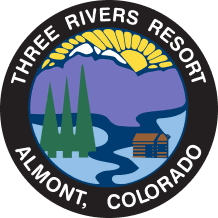As we head into the winter season, many anglers are finished fishing until spring. In the meantime, they resort to fly tying, saltwater destinations, and daydreaming about rising trout. But for some anglers, the focus shifts to ice fishing to keep the passion alive during the long winter. Here are a few ways that ice fishing actually helps us as fly fishers for trout, especially as it pertains to understanding trout behavior.
1. Trout are Light-Sensitive
We have all heard that trout react differently to varying light conditions. Chasing big browns with streamers at night comes to mind. When ice fishing, this concept becomes crystal clear, as the bite will dramatically change between low-light conditions like dawn, dusk, and cloudy times, versus bright sunny conditions. Typically, anglers will find that an aggressive jigging technique will entice many more trout to bite during low-light conditions. Conversely, bright conditions warrant passive jigging techniques or even dead-sticking to entice more wary trout.

2. Experiment with Size and Color
As fly fishers for trout, it’s easy to become complacent with our fly selection. Most anglers have confidence flies that work well most of the time. However, when fishing slows down, we attribute it to fewer active trout. While this can be true, more often than not we should actually change the size and colors of our flies to illicit more eats. We employ this technique on the ice by changing our jig, spoon size and color depending on the mood of the fish. When fish are feeding aggressively, “matching the hatch” with jugs that imitate suckers, juvenile trout, or perch works wonders. During tougher conditions, we can still catch fish by using more “attractor” style jigs. These make our presentations easier to see underwater. If trout are still weary of the attractors, that’s when we downsize our offerings and go with the drabbest, unintrusive baits to garner more strikes. By adjusting your presentation according to the trout’s mood, you will experience more success both on the ice and on the stream.
3. Seek Out Structure
When fly fishing in rivers, we understand that structure can hold trout. Rocks, logs, and drop-offs are some of the most productive fishing areas in a stream. But what about when those areas aren’t producing bites? Ice fishing teaches us that when fish aren’t feeding in structured areas, they are oftentimes near those areas in large flats. These flats are the kitchens of the lakes. They offer cruising trout visibility for long distances to see their prey, such as baitfish. These large lake flats are akin to riffles in a stream, where most of the aquatic invertebrates (trout food) are found. Next time you are struggling to catch fish in traditional structured zones in the river like pocket water and near logs, try prospecting the riffles near that structure, and you are likely to find actively feeding trout.
If you are experiencing withdrawals from trout fishing this winter, consider getting out on the ice to help understanding trout behavior better. The more we as anglers learn about trout and their feeding habits, the better all-around fishers we will become. Stay warm out there and enjoy the winter fishing season!
Patrick Blackdale is the outfitting manager at Willowfly Anglers. Willowfly offers year-round fly-fishing trips, and winter Ice Fishing trips in the Gunnison Valley of Colorado.

